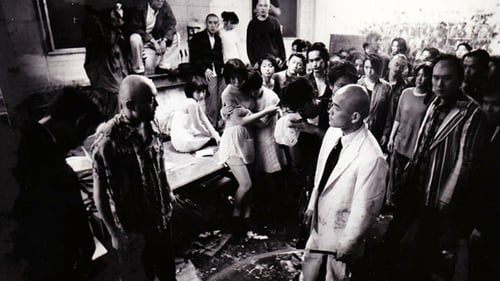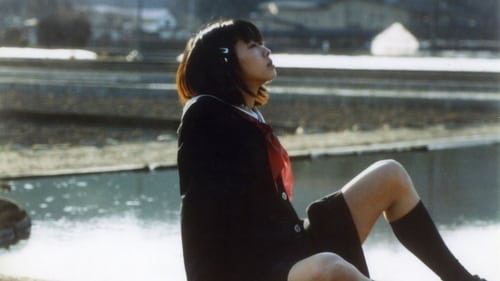
Boss Sugiyama
Near the end of the 20th century on Tokyo's Chuo train line, just before Hong Kong's return to Chinese control, masses of people go on a rampage, and love runs wild.

Landlord
There is a Japanese style inn located in an out-of-the-way area near Mount Fuji. No one knows if it's in business or not, but the inn is owned by two people: the expressionless host, and his bewitching daughter. The host lures six patrons to stay at his inn for one night. All the guests feel the inn has an odd feel to it, but none of them pays attention to it in particular. In reality, the host and his daughter have a hidden agenda. They are hunting in order to feed the host's son: a huge living zombie hidden away in a locked room, whom these cruel hunters dote on as if he were still part of the family. A twisted tale illustrating conflicts of consciousness, cold-blooded insanity, and the depths one will sink to for the love of one's family is about to begin...

Taxi Driver
This faux-documentary follows a butoh master, a fashion designer, and a filmmaker racing against time to create art and help a young girl in love.

Camera Operator
This faux-documentary follows a butoh master, a fashion designer, and a filmmaker racing against time to create art and help a young girl in love.

Keita
Shiro and Keita didn’t manage to enter university and are stuck in their hometown delivering newspapers. Shiro persists on finishing a film they started, but Keita is not very enthusiastic.

A road movie about three persons traveling in a campervan on their way to Tokyo, Hamamatsu, and Kyoto. The film is based on the story of the heroine, a young girl named Momo, who was a member of the "21 Faces of Kaijin" gang involved in the Glico Morinaga Incident, and the film's ideas are remarkable, including the use of a tape recording of the actual incident.

A man (Masahiro Sugiyama), an idol otaku, picks up a monster fish and starts to raise it at home. At the same time, he moves in with a runaway girl (Yoko Oguchi), and the friction between them becomes more intense.
The film was made at the end of the eighties, in response to the sense of stagnation in the provincial cities.
It's a film with a darker side than my previous film "Love on the Street".
It also has the strongest theatrical colour of all the films so far, but it shows the bankruptcy in a different way to "Street Corner of Love -".

Director
A girl finds a puddle of water on the street after the rain. And what does the girl make when she brings back pieces of mirrors scattered on the beach? This work beautifully visualizes the changing privacy of a girl's season as a fairy tale of a mirror and a girl's interaction. The seemingly trite material of a mirror is beautifully handled in a strikingly bold leap of the image, and combined with the sweetness of the girl's gestures, creates a world overflowing with a sense of transparency.

When Otomo Katsuhiro saw his manga Good Weather credited as the “original novel” he burst out laughing. There’s not an iota of his book anywhere in the film. Made in the same year as Sono Sion’s A Man’s Flower Road, Hirano Katsuyuki’s Happiness Avenue (where Sono plays a role) is madder and more abandoned, in both filmmaking and content. Lovelorn Masahiro goes on an odyssey to find fulfilment of his heart’s desire, and the sea he traverses are Tokyo’s open sewages.








